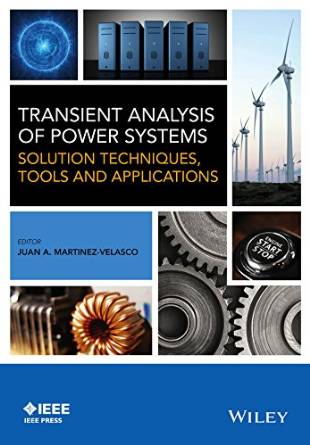Transient Analysis of Power Systems: A Comprehensive Overview
Introduction
Transient analysis is a critical aspect of power system engineering, focusing on the dynamic behavior of the system during disturbances such as faults, switching operations, and load changes. Understanding these transient phenomena is essential for ensuring the reliability and stability of power systems. This white paper provides a comprehensive overview of transient analysis techniques, tools, and applications in power systems engineering.
Types of Transients
- Electromagnetic Transients:
- Switching Surges: Occur due to the rapid switching of circuit breakers and other switching devices.
- Lightning Surges: Result from direct lightning strikes or indirect lightning strikes through the power system.
- Electromechanical Transients:
- Power System Stability: Involves the ability of a power system to maintain synchronism after a disturbance.
- Voltage Stability: Concerns the ability of the system to maintain voltage levels within acceptable limits.
Transient Analysis Techniques
- Time-Domain Simulation:
- EMTP (Electromagnetic Transient Program): A powerful tool for simulating electromagnetic transients.
- PSCAD/EMTDC: Another popular software for simulating electromagnetic and electromechanical transients.
- Frequency-Domain Analysis:
- Modal Analysis: Identifies the modes of oscillation of a power system.
- Transfer Function Analysis: Analyzes the system's response to specific inputs.
- Hybrid Simulation: Combines time-domain and frequency-domain techniques for efficient analysis.
Applications of Transient Analysis
- Design and Operation of Power Systems:
- Equipment Rating: Determining the insulation levels and thermal ratings of equipment.
- System Protection: Designing protective devices to mitigate the impact of transients.
- System Control: Developing control strategies to stabilize the system during disturbances.
- Fault Analysis:
- Fault Location: Identifying the location of faults on transmission lines.
- Fault Classification: Determining the type of fault (e.g., single-line-to-ground, three-phase).
- Power Quality Assessment:
- Voltage Sags and Swells: Analyzing the impact of voltage fluctuations on sensitive equipment.
- Harmonic Distortion: Evaluating the effects of harmonic currents and voltages on power system components.
Challenges and Future Trends
- Increasing Complexity of Power Systems: The integration of renewable energy sources and distributed generation systems poses new challenges for transient analysis.
- Real-Time Simulation: Developing real-time simulation tools to support operational decision-making.
- Artificial Intelligence and Machine Learning: Applying AI and ML techniques to improve the accuracy and efficiency of transient analysis.
Conclusion
Transient analysis is a critical tool for ensuring the reliability and stability of power systems. By understanding the principles and techniques of transient analysis, engineers can design, operate, and maintain power systems that are resilient to disturbances and capable of delivering high-quality power.
References:
- IEEE Standards:
- IEEE Std. C37.118.1-2002: IEEE Guide for Performing Electromagnetic Transients Analysis
- IEEE Std. C37.119-2014: IEEE Recommended Practice for the Simulation of Electromagnetic Transients and Voltages in High-Voltage Power Systems
- Textbooks:
- Power System Analysis by J. Duncan Glover and Mulukutla S. Sarma
- Power System Dynamics and Stability by P. Kundur
- Software Tools:
- EMTP-RV
- PSCAD/EMTDC
- MATLAB/Simulink
Would you like to delve deeper into a specific aspect of transient analysis, such as electromagnetic transients, electromechanical transients, or power system stability?



